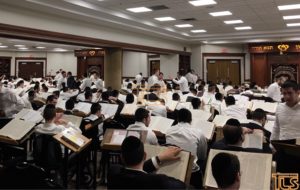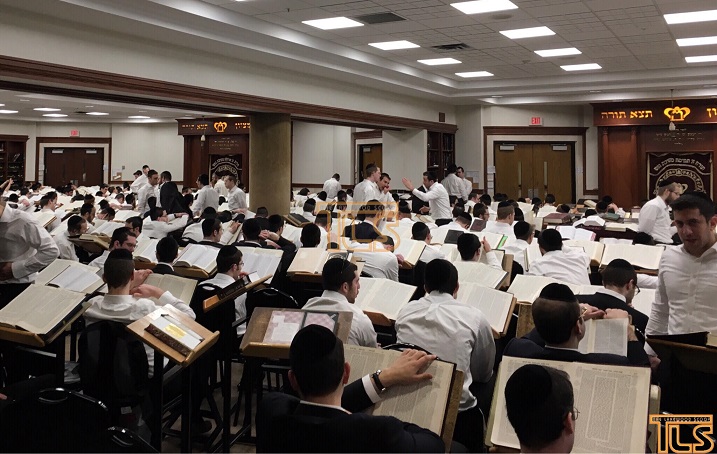 By: D Wilschanski & Co CPA’s. Here is how it is done: Under IRS regulations, a student receiving a Pell Grant, which this year is maxed out at $5,920, is permitted to allocate the grant to either tax free tuition or taxable living expenses, such as room and board, transportation expenses, or optional equipment. The allocation is without regard to the Institution’s treatment of the grant. The purpose of the allocation is that if the full Pell is allocated to tuition then the taxpayer will be ineligible for the American Opportunity ( AOTC) or the Lifetime Learning Education Credit (LLEC) because the law requires deducting from the $ 4000 maximum tuition expense eligible for the credit per student, any non-taxable scholarship such as non-taxable Pell grants. However, if some or all of the Pell grant treated as taxable by being allocated to taxable living expenses, although the student will be required to report the additional income as taxable scholarship, that amount will not be deducted from the $ 4000 credit-eligible amount for the AOTC leaving the parent with a potential AOTC tax credit of up to $2500 per student of which 40% is cash back from the government or $1000 per student.
By: D Wilschanski & Co CPA’s. Here is how it is done: Under IRS regulations, a student receiving a Pell Grant, which this year is maxed out at $5,920, is permitted to allocate the grant to either tax free tuition or taxable living expenses, such as room and board, transportation expenses, or optional equipment. The allocation is without regard to the Institution’s treatment of the grant. The purpose of the allocation is that if the full Pell is allocated to tuition then the taxpayer will be ineligible for the American Opportunity ( AOTC) or the Lifetime Learning Education Credit (LLEC) because the law requires deducting from the $ 4000 maximum tuition expense eligible for the credit per student, any non-taxable scholarship such as non-taxable Pell grants. However, if some or all of the Pell grant treated as taxable by being allocated to taxable living expenses, although the student will be required to report the additional income as taxable scholarship, that amount will not be deducted from the $ 4000 credit-eligible amount for the AOTC leaving the parent with a potential AOTC tax credit of up to $2500 per student of which 40% is cash back from the government or $1000 per student.
The mechanics of the allocation process is effected by simply reporting the associated living expenses as additional taxable scholarship income on the student’s Form 1040.
An AOTC tax credit of $2500 per student is generally much more valuable than the additional taxes incurred as a result of increasing taxable income, Very often, especially in the case of young full-time student still dependent on his parent’s return, no taxes would be incurred on the additional income.
For example:-Golddigger Family consists of two parents and two children in an eligible Yeshiva or Seminary. The parents earned income is $ 35000. The schools fees consist of a $5,920 tuition charge and a $4,000 dorm fee, with a $5,920 Pell grant awarded to cover the fees. If $ 4000 of the Pell is allocated to the students living expenses, the students (not the parents) would each report the additional $ 4000 as taxable scholarship income, on their returns which would not incur any tax. This would free up the $4000 of tuition expenses per child required for an AOTC. The combined family gain would be $2000 cash which is a handy return to the Goldiggers for doing the allocation. Alternatively, if the application of the Pell grant tax free to tuition expense was made by default, there would be no AOTC and no additional taxable income which means that the Goldiggers, for failing to optimize their benefit , would lose the $ 2000.
Another example:- In family Kvetcher, the parent himself attends an eligible Yeshiva or the wife a Seminary and they have a dependent child. The parent earns $35,000, tuition is $4000 and the Pell grant is $5,920. If the parent allocates the $5,920 to living expenses, which can include their monthly rent as a room and board expense, by reporting the additional taxable income, this makes available $4000 of the tuition paid to qualify for the AOTC. The new post-allocation taxable income is $ 40920 and there is an AOTC of $2500 netting a tax gain of $1176, after calculating the effect of the additional income on their tax liability and other tax credits. However, if the Pell is allocated or defaulted to tuition, there would be no AOTC and a reduced tax but the resultant effect would be a $1176 tax loss.
There are many other common situations where a taxpayer may think they are ineligible for the credit, when indeed they are eligible such as when a third party pays tuition on their behalf. This would apply in a situation where, for example, Zaidy is paying tuition for einekel, Yankel. If Zaidy specifies that he is paying Yankel’s tuition, not a donation or room and board, the parents of Yankel are eligible to claim the valuable credit on their return. Note that in this case no additional income needs to be reported by any of the parties involved.
The calculation to achieve optimization of benefits in this allocation wonderland is complex and a number of conflicting factors with regard to marginal tax rates based on two returns and earned income tax credit computations come into play. Increasing taxable income might be counterproductive with regards to other programs tied to certain tax figures such as New Jersey Health Care eligibility rules as described in a previous article. It follows that each situation should be carefully considered in its own context with advanced tax software and a knowledgeable preparer. One size does not fit all.
It is worthy of note that even though allocation of Pell is permitted, Form 1098T which was intended to be used in connection with the AOTC and which is required to be provided to taxpayers by January 31 does not distinguish between taxable and non-taxable scholarship and taxpayers should therefore be sure to mention to their preparer that a Pell grant was received which should be accordingly considered for allocation as above. It might cost you up to $2,500 in credits and cash per each eligible student to go to a tax preparer who is not familiar with the topic. Most tax preparers will take the 1098T at face value without making critical further inquiries, resulting in an expensive mistake. If your tax preparer fails to inquire if college age children attend an eligible institution and how tuition was paid, it is time to select one who does.
Many taxpayers whose tuition is wholly paid by government programs or scholarships, although they may have had to pay a significant amount for items such as dorm fees or transportation, are not required to receive Form 1098T, and are without minimal notice, let alone guidance, about this new mechanism for qualifying for the valuable AOTC, some of which credit is refundable even without a tax liability. In these situations a potential tax credit can be unwittingly lost.
In summary, the regulations are designed to alleviate the financial predicament of beleaguered Pell recipients who are otherwise ineligible for the AOTC or LLEC credit in an atmosphere of spiraling tuition and living costs and its benefits could be substantial if worked through correctly.


I don’t get it , but thanks anyhow
Sam try harder.! Uncle only wants to help.